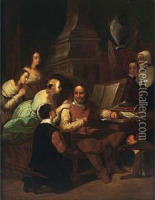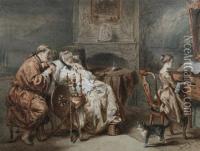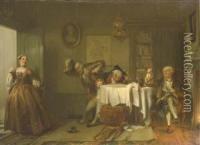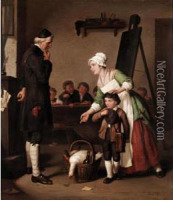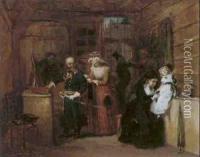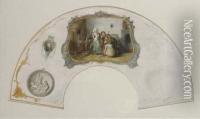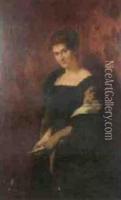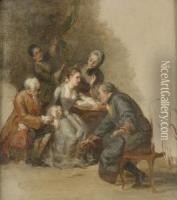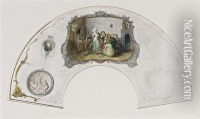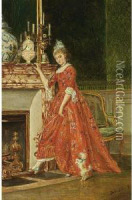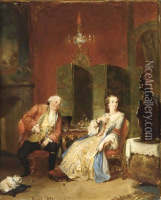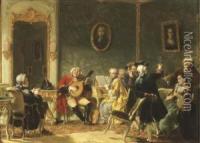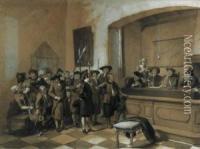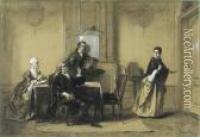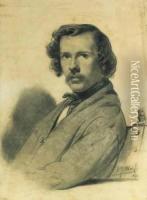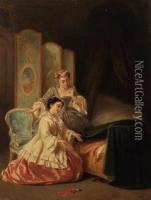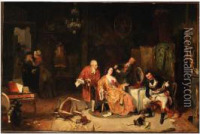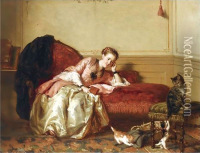David Bles Paintings
David Bles was a notable 19th-century Dutch painter, known for his genre works and portraits that often included a subtle moral or satirical message. Born on September 19, 1821, in The Hague, Netherlands, Bles was influenced by the Dutch Golden Age of painting, although he lived many years after this period.
During his early years, Bles received his artistic training at the Academy of Art in The Hague, where he was tutored by notable artists such as Cornelis Kruseman and later by Hendrik van de Sande Bakhuyzen. He quickly developed his own style, which was characterized by finely detailed work and a focus on everyday scenes.
Bles gained recognition for his keen observation of social interactions and his ability to depict them with a nuanced blend of humor and drama. His works often featured contemporary bourgeois life and subtly commented on the manners and mores of his time.
Throughout his career, David Bles exhibited his works widely, both within the Netherlands and abroad. He participated in exhibitions in Amsterdam, The Hague, and Paris, among other cities. His paintings were well-received, and he garnered awards for his contributions to the arts, including a gold medal at the Paris Exhibition in 1855.
Despite the acclaim, Bles never strayed far from his roots in The Hague, where he was part of the Pulchri Studio, an important society of artists based in the city. He was also a member of the Royal Academy of Art in Amsterdam.
Bles continued to paint and exhibit his works until his later years. He passed away on November 3, 1899, leaving behind a legacy as one of the prominent Dutch artists of his time, with works that continue to be appreciated for their charm, wit, and insight into 19th-century Dutch society.
